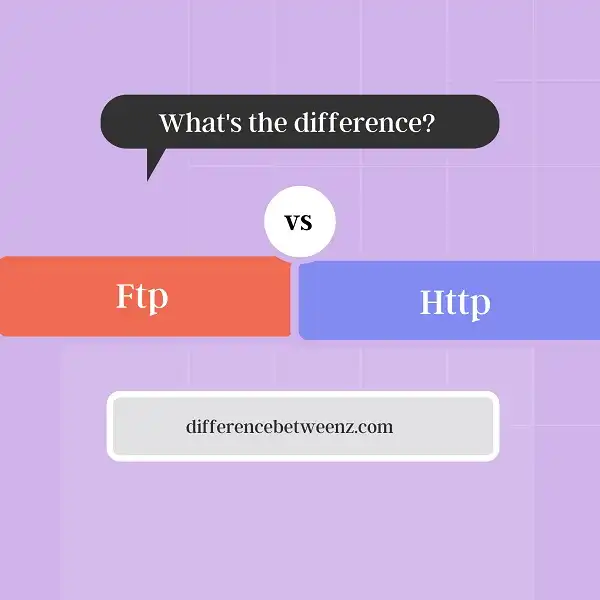There are many ways to transfer files between computers. Two of the most popular methods are FTP and HTTP. While both protocols have their advantages, there are some significant differences between them. In this article, we will take a look at these differences and help you decide which protocol is best for your needs.
What is FTP?
FTP stands for “File Transfer Protocol.” It is a method used to transfer files between two computers over a network. FTP uses a client-server architecture, meaning that one computer (the client) initiates a connection with another computer (the server). Once the connection is established, the client can upload or download files from the server. In order to use FTP, both the client and server must have FTP software installed. There are many different FTP software programs available, both free and paid. Once FTP is set up, it is typically used to transfer large files such as images, videos, or software programs. However, it can also be used to transfer small text files. Either way, FTP is a convenient way to move files between computers.
What is HTTP?
HyperText Transfer Protocol (HTTP) is a communication protocol used to transfer data on the World Wide Web. It is the foundation of data communication for the World Wide Web. HTTP defines how messages are formatted and transmitted, and what actions Web servers and browsers should take in response to various commands. For example, when you enter a URL in your browser, this actually sends an HTTP command to the Web server directing it to fetch and transmit the requested Web page. HTTP is based on a request-response model: A client sends a request to a server, and the server returns a response. The client usually initiates the request, but in some cases, it may be the server that initiates the transaction, as when a Web page updates regularly on its own initiative rather than waiting for a user to request it. HTTP is known as a stateless protocol because each command is executed independently, without regard to any previous commands. This means that once a client has made a request, it can move on without worrying about whether or not the request was completed successfully; if there was an error, the server will send back an error message instead of the requested information.
Difference between Ftp and Http
Although both FTP and HTTP are protocols used for transferring data, there are some key differences between the two. FTP, or File Transfer Protocol, is typically used for uploading or downloading files from a server. In contrast, HTTP, or Hypertext Transfer Protocol, is primarily used for accessing web pages. One of the biggest differences between FTP and HTTP is that FTP requires a user to log in with a username and password, while HTTP does not. This is because FTP transfers tend to be much larger than HTTP transfers, and thus require more security. Another notable difference is that FTP uses port 21 by default, while HTTP uses port 80. Finally, FTP is typically faster than HTTP because it uses multiple connections simultaneously. However, this also means that FTP is more likely to cause congestion on a network.
Conclusion
FTP and HTTP are both protocols used for transferring files over the internet. They both have their advantages and disadvantages, but ultimately FTP is a more reliable way to transfer files. If you need to send or receive large files, we recommend using FTP.


